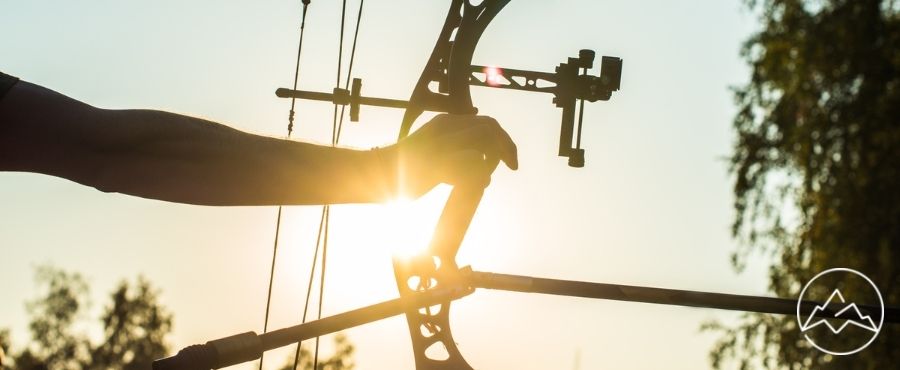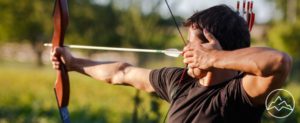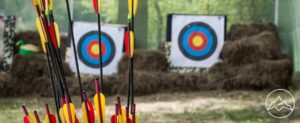Mastering compound bow let off is a fundamental aspect of enhancing archery skills. The let-off percentage, which refers to the weight held by a shooter at full draw, plays a crucial role in achieving a more comfortable and stable aim. Compound bows utilize a sophisticated system of cables and cams to store and transfer energy, granting various benefits such as reduced holding weight, diminished fatigue, and improved learning and practice experiences. However, it is important to acknowledge the potential drawbacks of let off, including bow arm fatigue and the risk of developing improper archery form. The ideal let off relies on the intended use of the compound bow, with expert target archers favoring lower let off, while hunting compound bows generally feature higher let off. To become a better archer and enhance overall skills, understanding and mastering compound bow let off is of paramount importance.
Key Takeaways
- Let off in compound bows is important for enhancing archery skills.
- Benefits of let off include reduced holding weight, diminished fatigue, and improved learning and practice experiences.
- Drawbacks of let off include bow arm fatigue and the risk of developing improper archery form.
- Choosing the right let off involves considering the intended use and individual preferences.
What is it?
Compound bow let off refers to the percentage of the draw weight that a shooter holds at full draw and plays a crucial role in allowing shooters to comfortably aim and hold the bow. Understanding the importance of let off is essential for mastering archery and becoming a better shooter. Let off provides several benefits, such as reducing holding weight, minimizing general fatigue, and facilitating easier learning and practice. Techniques for achieving optimal let off involve using a system of cables and cams that store energy in the bow. The cams on a compound bow rotate to create stored energy, which then transfers from the string to the limbs of the bow at full draw. However, it is important to note that let off also presents some drawbacks, such as the risk of bow arm fatigue and the potential for bad archery form.
Benefits and Drawbacks
One interesting statistic to note is that expert target archers tend to prefer lower let off percentages, typically ranging from 60% to 70%, while hunting compound bows generally have higher let off percentages, typically ranging from 80% to 90%. This preference is based on the specific needs and requirements of each activity.
Pros of compound bow let off:
1) Less holding weight: The reduced weight at full draw allows shooters to aim and hold the bow steady for longer periods of time.
2) Less general fatigue: With less weight to hold, shooters experience less fatigue in their arms and shoulders, enabling them to shoot for longer durations.
3) Easier learning and practice: Beginners find it easier to learn and practice archery with higher let off, as it provides a more forgiving and stable platform for shooting.
4) Impact on accuracy: Let off helps maintain consistent anchor points, leading to increased accuracy and precision in shooting.
Cons of compound bow let off:
1) Bow arm fatigue: The reduced holding weight can lead to increased fatigue in the bow arm, affecting stability and accuracy over time.
2) Potential for bad archery form: Higher let off percentages may allow shooters to develop poor form, relying too heavily on the let off instead of proper technique.
3) Impact on accuracy: In certain situations, such as long-range target shooting, lower let off percentages may provide better accuracy due to increased control and stability.
4) Over-reliance on let off: Shooters who become overly reliant on the let off may struggle when shooting with traditional bows or in situations where let off is not available.
Understanding the benefits and drawbacks of compound bow let off is crucial in mastering archery and becoming a better shooter. Shooters must carefully consider their intended use and personal preferences to find the ideal let off percentage that optimizes accuracy and performance.
Choosing the Right Let Off
To choose the appropriate let off percentage for a compound bow, careful consideration of the intended use and individual preferences is necessary. Finding the ideal let off involves understanding the differences in let off for different types of bows. Expert target archers typically prefer a lower let off, ranging from 60% to 70%, as it allows them to maintain control and precision during their shots. On the other hand, hunting compound bows generally have a higher let off, around 80% to 90%, which provides hunters with a significant reduction in holding weight when aiming at their targets. It is important to note that personal preferences may vary, and some archers may prefer a higher or lower let off depending on their shooting style and physical abilities. Ultimately, the choice of let off should be based on an individual’s specific needs and goals in archery.
Frequently Asked Questions
How does let off affect the speed and accuracy of a compound bow?
What effect does let off have on the speed and accuracy of a compound bow? Let off plays a significant role in arrow trajectory and consistent shooting. With higher let off, the shooter holds less weight at full draw, resulting in reduced muscle fatigue and improved stability. This allows for more precise aiming and consistent release, leading to increased accuracy. Additionally, the stored energy from the bow’s cams contributes to the arrow’s speed, resulting in faster arrow flight and improved overall performance.
Are there any specific exercises or techniques to improve bow arm fatigue caused by let off?
Exercises and techniques can be employed to alleviate bow arm fatigue caused by compound bow let off. Strengthening exercises, such as bicep curls and tricep extensions, can enhance the muscles used to hold the bow at full draw. Additionally, practicing proper form and alignment can help distribute the weight more evenly across the bow arm. Utilizing a stabilizer on the bow can also reduce fatigue by minimizing bow movement. These exercises and techniques can improve endurance and alleviate bow arm fatigue during archery practice and competitions.
Does the type of arrow used affect the ideal let off for a compound bow?
Arrow selection can have an impact on the ideal let off for a compound bow. The weight and spine of the arrow can affect the arrow trajectory, which in turn can influence the let off requirements. Heavier and stiffer arrows may require a higher let off to achieve optimal arrow trajectory, while lighter and more flexible arrows may be better suited to a lower let off. It is important to consider the specific characteristics of the arrow when determining the ideal let off for a compound bow.
Can let off be adjusted or customized on a compound bow?
Can let off be adjusted or customized on a compound bow? Customizing let off on compound bows offers several benefits. It allows shooters to tailor the draw weight and holding weight to their preferences and needs. Adjustable let off also enables archers to adapt to different shooting situations, such as target shooting or hunting. By fine-tuning let off, shooters can optimize their performance and accuracy. Overall, the ability to customize let off on compound bows enhances the shooting experience and contributes to better archery skills.
Are there any safety considerations or precautions when using a compound bow with high let off?
Safety considerations and precautions should be taken when using a compound bow with high let off. The reduced holding weight provided by high let off can lead to a relaxed grip, which may cause the bow to slip or fall from the shooter’s hand. It is important to maintain a firm grip on the bow and use a wrist sling for added security. Additionally, shooters should be cautious of their bow arm fatigue and ensure proper form to prevent injuries.
Conclusion
Mastering compound bow let off is an essential skill for any serious archer. The let-off percentage determines the amount of weight a shooter holds at full draw, with higher let off providing a more comfortable and stable aim. While let off offers benefits such as reduced holding weight and less fatigue, it is important to be aware of potential drawbacks like bow arm fatigue and developing bad form. Expert target archers prefer lower let off, while hunting compound bows generally have higher let off. Understanding and mastering compound bow let off is crucial for improving archery skills and becoming a better shooter.












